Unlocking Real-Time Insights: Integrating GCP Services for Order Processing and Analytics

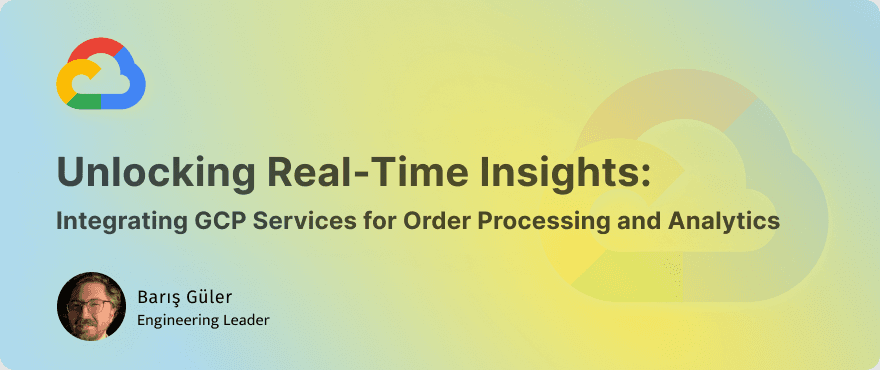

TLDR; You can also refer to the talk I had talked in detail over the GCP Istanbul Channel here. If you would like to check out the presentation file, go jump over this link 😊.

In today's fast-paced business world, data-driven decision-making is the key to success. As a product owner, I recently faced a challenge: monitoring the performance of food products in the market in real-time and delivering actionable insights to upper management. To tackle this, I turned to Google Cloud Platform (GCP) and integrated a set of powerful GCP services to create a robust real-time analytics solution.
Here's how it all unfolded:
The Challenge
The product owner's request was clear: track the performance of food products in real-time and generate insightful reports. This required a seamless flow from data collection to presentation. The challenge was integrating various GCP services to meet these needs effectively.
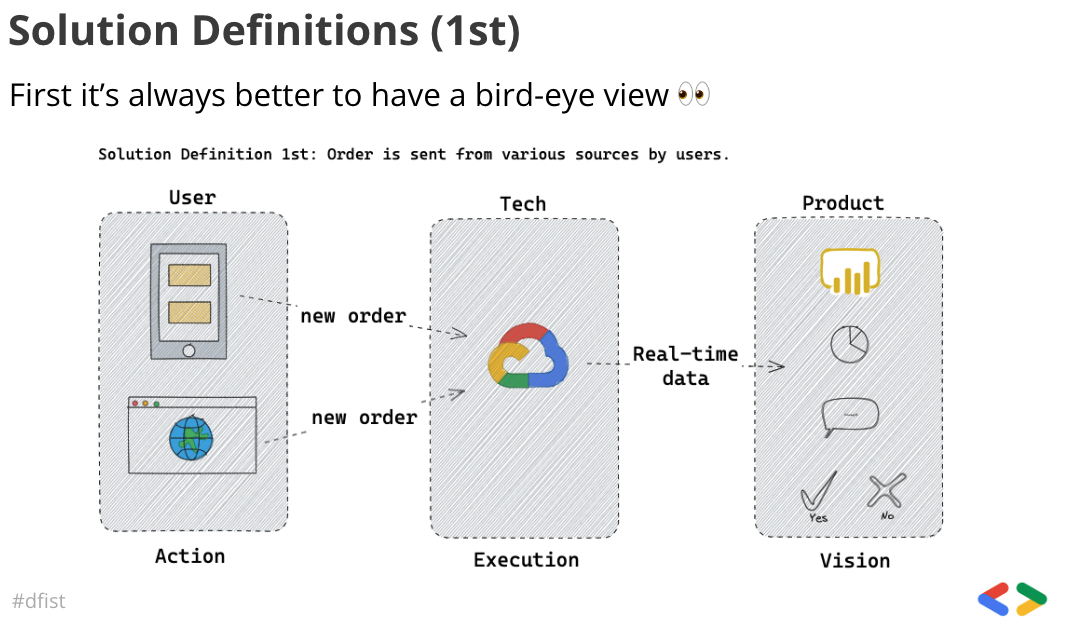
Method over Tools: Vertical Slicing 🍰
In the context of our real-time analytics use case, applying vertical slicing was a game-changer. Vertical slicing entails dividing the project into smaller, functional components that deliver end-to-end value. In our case, we identified specific data streams, such as order processing, product performance tracking, and reporting, as our vertical slices.
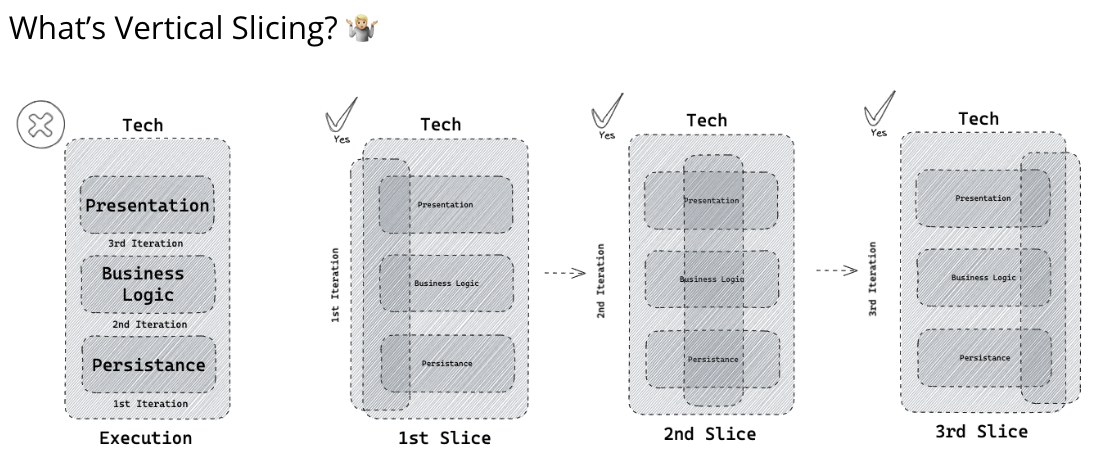
Each vertical slice was/can be developed independently, allowing for rapid iteration and parallel progress. By focusing on one functional area at a time, we ensured that every component was thoroughly tested and optimized, resulting in a robust and efficient real-time analytics solution. This approach not only accelerated the project but also provided flexibility for adjustments and enhancements in response to evolving requirements and user feedback. Vertical slicing is a valuable strategy when dealing with complex, multifaceted projects, as it simplifies development and facilitates a more adaptive workflow by basically organise deliverables by functionality (data distribution into a dashboard, auth, etch.) instead of tiers (database design & schemas, business logic and the presentation layers).
The GCP Services 🌐
1. Cloud PubSub
Cloud PubSub became the backbone of our solution, enabling real-time messaging and event-driven processing. It allowed us to ingest data from various sources and distribute it efficiently.
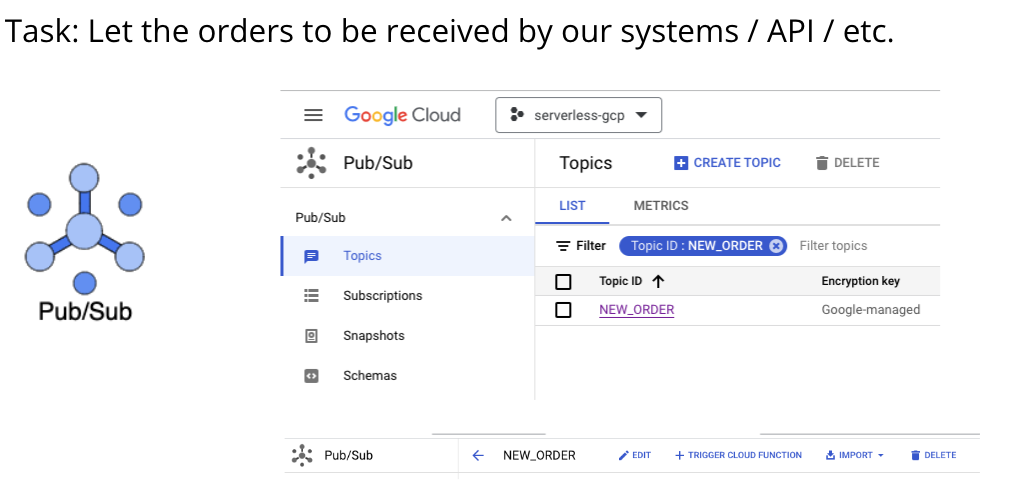
2. Cloud Functions
Immediately after the launch, we took to LinkedIn to make the announcement. We shared the news both on the Hearbitz LinkedIn account and my personal account, ensuring that our professional network was aware of the milestone we had achieved. 📚
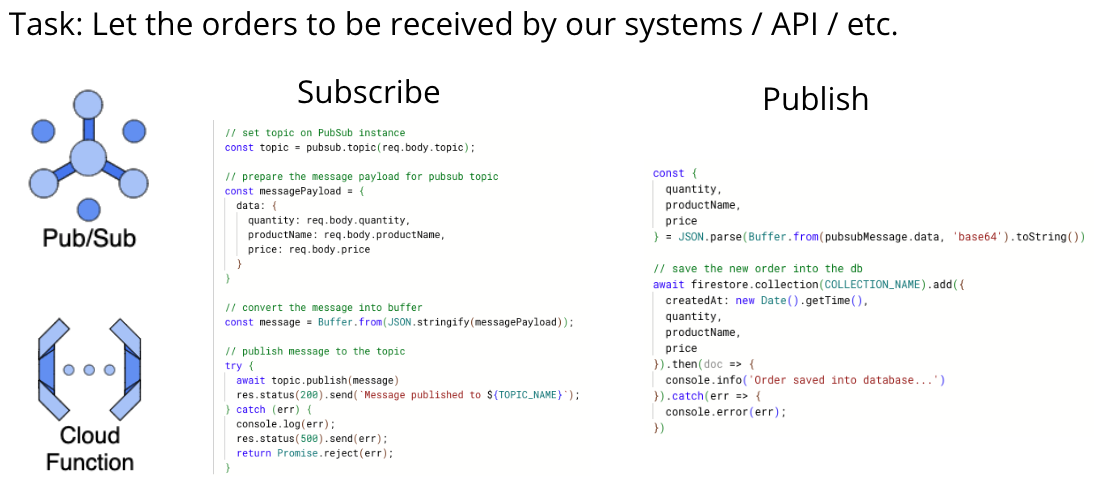
3. Firestore and Firebase Auth Rules
Firestore was our database of choice, offering real-time data synchronization and integration with Firebase Auth Rules for secure access control.
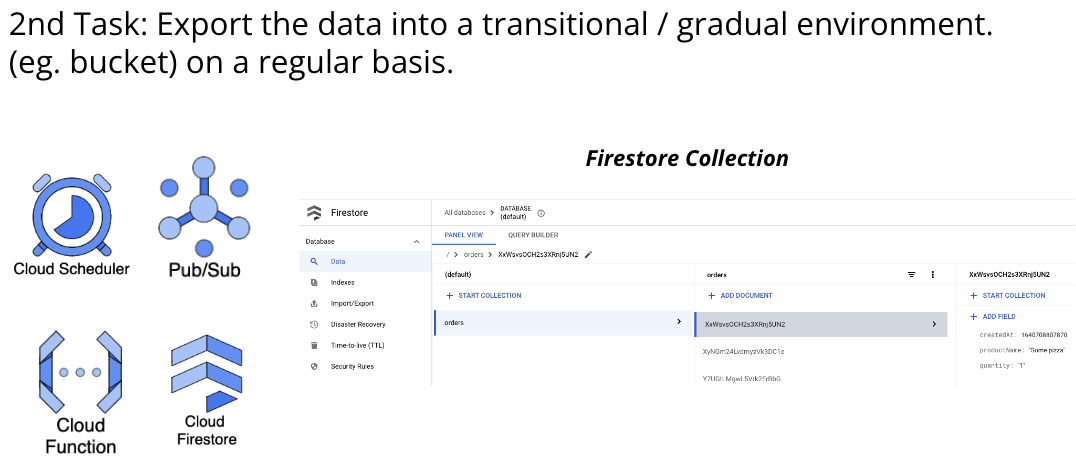
4. Cloud Storage
For storing large datasets and files, Cloud Storage served as our scalable and reliable solution.

5. BigQuery Subscriptions
We integrated BigQuery Subscriptions over PubSub Topics, allowing us to analyze data with SQL-like queries in real-time. A well-defined schema ensured data consistency and accuracy.
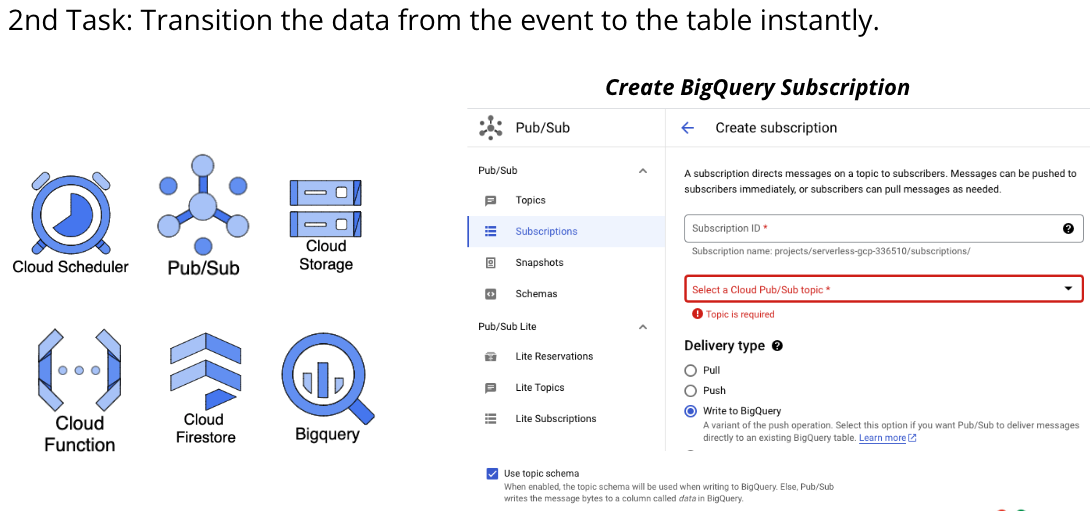
6. Looker Studio
For data visualization and reporting, Looker Studio was the perfect choice, providing a user-friendly interface to present real-time insights.
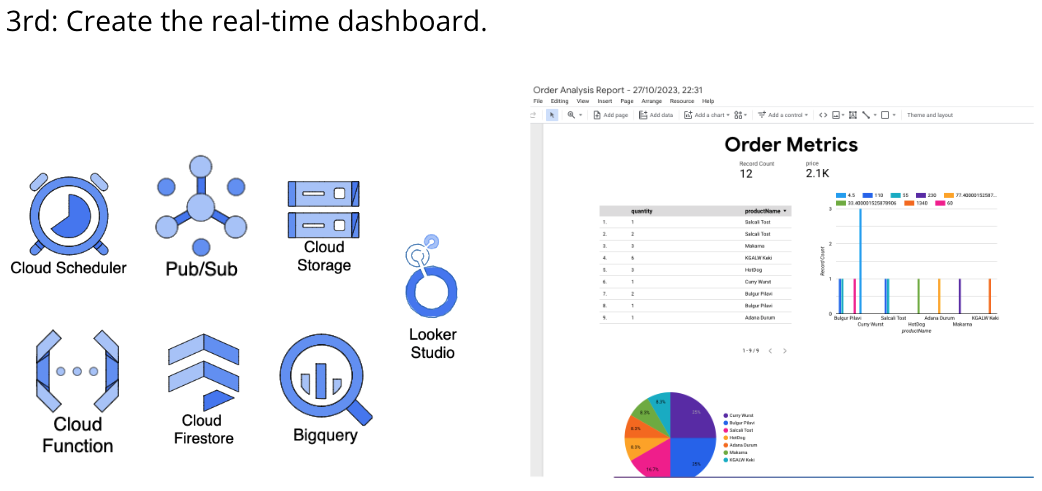
The Use Case
Our use case demanded a solution that could deliver real-time insights and reports. We implemented vertical slicing to efficiently create a real-time dashboard. By breaking the project into two cycles, or sprints in Agile terms, we ensured rapid progress.

Conclusion
In this blog post, I've shared how we harnessed the power of GCP services to create a seamless flow for real-time order processing and analytics. By integrating Cloud PubSub, Cloud Functions, Firestore, Cloud Storage, BigQuery Subscriptions, and Looker Studio, we successfully met the product owner's request and delivered actionable insights in real time.
Stay tuned for a more detailed walkthrough in our upcoming posts, where I'll dive into each GCP service's role and share practical tips for integration.
If you're working on a similar project or have questions about GCP integration, feel free to reach out! Let's leverage the potential of cloud technology for data-driven success.
Stay tuned for more tech insights and best practices!